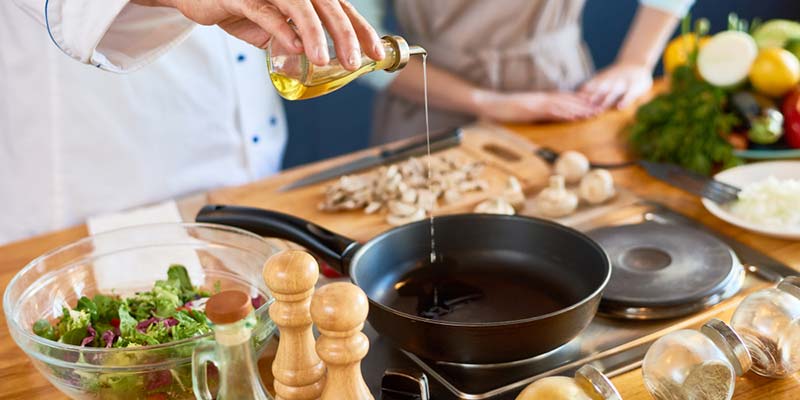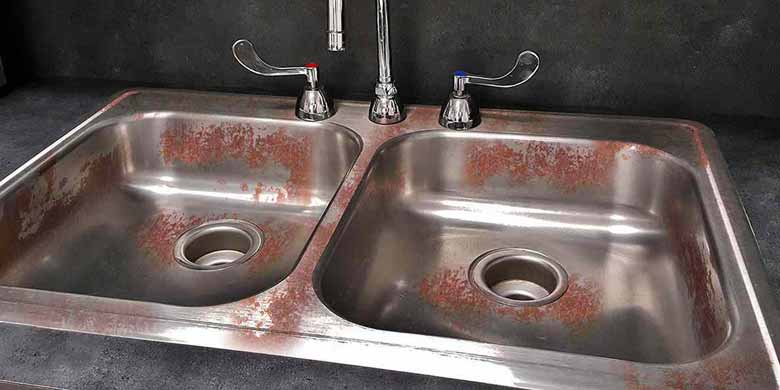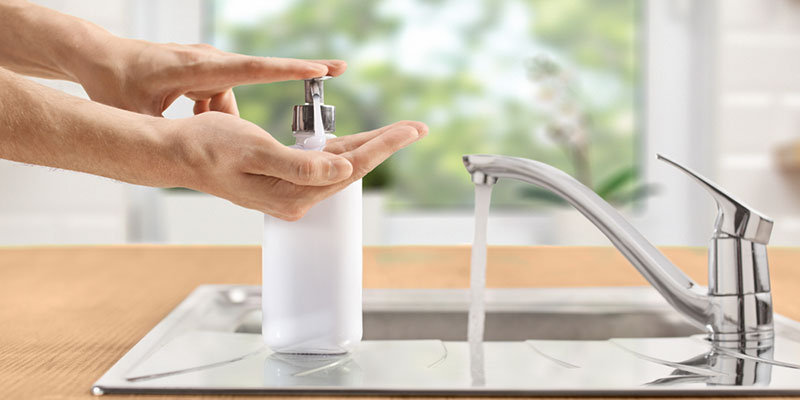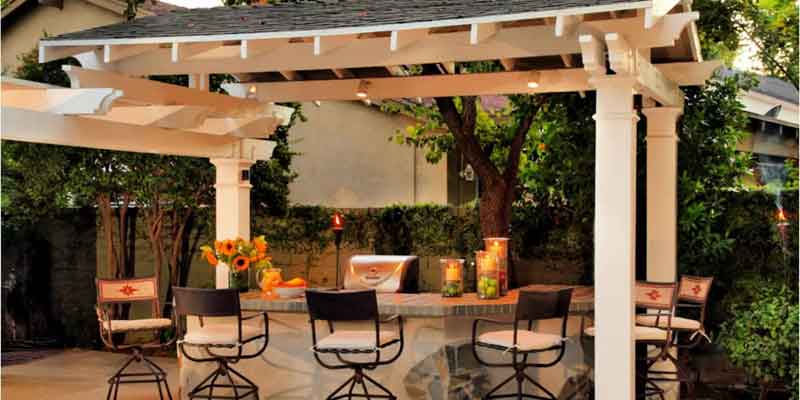Best 3 Types of Cooking Pans

Passing a long time in the kitchen can make your day dull and less enjoyable. But if you can use the proper cooking pans to make the dishes, things will be easier.
When it comes to choosing a cooking pan, you need to consider the material, size, capacity, and overall cooking pan construction. However, why should you think much while we’ve crafted this article with every relevant information regarding this topic?
Here, we’ve talked about three types of cooking pans you should know before purchasing one. Let’s get to know the details.
3 Types of Cooking Pans
Without wasting a second, let’s enter into the core of our cooking pans discussion.
1. Saute Pans
 If you are not acquainted with this name cooking pans, you must have heard of a frying pan or stainless steel, right? Well, these all are the same. A saute cooking pans comes with straight and tall sides, a flat bottom, and a long handle.
If you are not acquainted with this name cooking pans, you must have heard of a frying pan or stainless steel, right? Well, these all are the same. A saute cooking pans comes with straight and tall sides, a flat bottom, and a long handle.
Another notable feature is, saute cooking pans always come along with a lid. Moreover, a secondary helper handle also comes with the remaining long handle.
People who love to have a quick-meal choose to use a saute pan. The curved sides that come round for the bottom diameter, these cooking pans offer an amazing cooking area.
The flat bottom lets the ingredients crowd together in the middle of the cooking pans so that the food doesn’t slide back. On the other hand, the straight, high sides allow to cook the best ever sauced-based dishes because it catches any wayward splashes.
When it comes to the thickness of a saute pan, remember that the thicker your pan, the better your cooking will be. Because the thicker pans can distribute heat better. It provides a steady temperature that cooks your food evenly.
If you ask about the diameter and capacity of a saute pan, they remain 6-12 inches and 1-7 quarts respectively. Chances are it’s your first ever saute pan, if it is, go for a middle-sized one (say, a 10-inch diameter and 3-quart volumed pan).
Another point you should be concerned about is the material of a saute pan. Ceramic, stainless steel, cast iron, and nonstick surfaces are the common materials of saute pans.
Choosing a saute pan that contains combined materials (e.g stainless steel plus hard-anodized aluminum) is the best option.
How to Use a Saute Pan
You can apply two ways to heat your saute pan- direct heat and indirect heat. These two ways will provide individual results while cooking.
The first way, direct heat, needs to place your saute pan directly on the burner or any heat source. The heat source will heat the pan as well as heat the food directly. In this case, your food will be heating in one direction.
Your food will be cooked quicker in this process. And, direct heat is the perfect way for searing meat.
On the other hand, indirect heating doesn’t require placing the pan above a heat source (e.g food in an oven).
And, using a saute pan is pretty easy, nothing complex. First of all, you need to heat the pan, once it’s hot enough, add butter or oil to prevent the food from sticking. After that, add food to that hot pan and continue stirring the food.
When to Use a Saute Pan
- For stirring, pan-frying, and general-purpose sauteing
- For a high-heat searing
- For both wet and dry heat cooking
- Large in size
- Easy to store
- A great option for a wide range of uses
- Food can overspill if you add too much food
- Being quite a heavy pan, food can be hard to toss
2. Skillets
 Skillets are our mostly-used everyday pan that hardly come with a lid. Skillets don’t have high sides, they come with sloping sides (only 2-3 inches). Also, these pans create a wide opening at the top which allows the ingredients easy to toss.
Skillets are our mostly-used everyday pan that hardly come with a lid. Skillets don’t have high sides, they come with sloping sides (only 2-3 inches). Also, these pans create a wide opening at the top which allows the ingredients easy to toss.
Skillets also have a long handle like the saute pans. The approximate size range of skillets is from 6 to 16 inches. The most common materials of skillets are stainless steel, cast iron, and nonstick coatings.
Skillets made of cast iron are heavy but the best possible heat conductors. To maintain cast iron skillets, you need to go through a process named ‘seasoning’ instead of using only soap and water.
On the contrary, nonstick skillets are way lighter than the previous type. For the coated surface, you don’t need to add butter or oil, the food will easily move in the pan.
And, skillets that are made of stainless steel are a combination of cast iron and nonstick features (steady heat plus lighter). It requires some butter or oil to cook.
How to Use a Skillet
If you want to cut down more fats for your diet purpose, nonstick skillets are your cup of tea. Cast iron skillets are oven safe and are an ideal option to sustain high temperatures. And, the unique feature you’ll get from stainless steel skillets is that your food will have an amazing golden brown exterior.
And, using a skillet is super easy. Preheating the pan, adding oil or butter, and cooking your food- that’s all about using a skillet.
When to Use a Skillet
- When you don’t want a lid
- For a high-heat searing
- If you want to do a ‘chef toss’ for moving the food
- For stir-frying, pan-frying, and sauteing
- Easy to clean
- Skillets have a great thermal density
- Long-lasting
- Cast iron skillets are heavy
- Skillets take a bit longer time to heat up
3. Sauciers
 Sauciers are almost the same as saucepans but come with a wider cooking area. These pans are suitable for preparing delicious pasta, cooking oatmeal, or hard boiling eggs.
Sauciers are almost the same as saucepans but come with a wider cooking area. These pans are suitable for preparing delicious pasta, cooking oatmeal, or hard boiling eggs.
Aluminum, copper, stainless steel, and nonstick metals are the most common materials of sauciers. Another upgraded version is a multi-ply stainless steel saucier that contains both aluminum and stainless steel. It offers even heat and a non-reactive cooking surface.
Sauciers have a long handle and a lid as well. They have high sides (4-6 inches tall) and come in different sizes.
How to Use a Saucier
Hearing the name for the first time you may think saucier is used only for making the sauce. Well, you can make the best sauce ever using a saucier. But you can make instant cheese and macaroni as well.
These pans are perfect for long simmers. Sauciers that come with taller sides and even greater capacities slow down evaporation which allows better boiling.
To use a saucier, simply preheat it and cook your food using oil or butter, nothing that complicated here as well!
- Even heat distribution
- Durable
- Versatile
- Heavy
- Difficult to clean
Which One to Choose?
Well, that’s totally up to you. We’ve come with the basic information, pros, and cons of the three popular cooking pans. Each of them has its own features. Now, you better match the features with your needs and choose which one is the best fit for you.
10 Best Cast Iron Grill Pan in a Video Review
Final Words
Choosing the right type of cooking plan helps you to make the kitchen time easier and enjoyable. Hopefully, after reading all these, you now know the most common types of cooking pans and which one suits you the best.
Before wrapping it up, we have a piece of suggestion for you. Try your best to use and maintain the pan properly from the very beginning. It will help you to avoid less hassle in the future.
- 10 Best Cast Iron Grill Pan for Healthy Steaks You’ll Like To Taste!
- 10 Best Stovetop Griddle For Delicious And Crispy Homemade Food
- 10 Best Pots and Pans for Gas Stove



